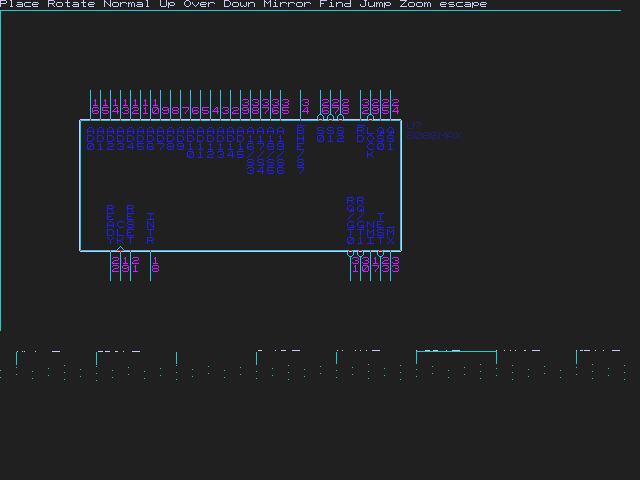
The Intel 8086 is the original 16-bit Intel Processor. Intel introduced the 8086 and 8088 microprocessor extensions to the 8080 product line in 1979. This chip started the PC revolution and made Intel into a multi-million dollar industry leader.
The 8086 and 8088 were binary compatible with each other, but not pin-compatible. Binary compatibility means that either microprocessor could execute the same programs. Pin-incompatibility means that you can’t plug the 8086 into the 8088 and visa versa, and expect the chips to work. The new "x86" chips implemented a Complex Instruction Set Computer (CISC) design methodology.
The 8086 and 8088 both feature twenty address pins. The number of address pins determines how much memory a microprocessor can access. Twenty address pins gave these microprocessors a total address space of one megabyte (2^20 = one megabyte).
The 8086 and 8088 featured different data bus sizes. The data bus size determines how many bytes of data the microprocessor can read in each cycle. The 8086 featured a 16-bit data bus, while the 8088 featured an 8-bit data bus. IBM chose to implement the 8088 in the IBM-PC, thus saving some cost and design complexity.

See also:
"The Intel 8086, a new microcomputer, extends the midrange 8080 family into the 16-bit arena. The chip has attributes of both 8- and 16-bit processors. By executing the full set of 8080A/8085 8-bit instructions plus a powerful new set of 16-bit instructions, it enables a system designer familiar with existing 8080 devices to boost performance by a factor of as much as 10 while using essentially the same 8080 software package and development tools.
"The goals of the 8086 architectural design were to extend existing 8080 features symmetrically, across the board, and to add processing capabilities not to be found in the 8080. The added features include 16-bit arithmetic, signed 8- and 16-bit arithmetic (including multiply and divide), efficient interruptible byte-string operations, and improved bit manipulation. Significantly, they also include mechanisms for such minicomputer-type operations as reentrant code, position-independent code, and dynamically relocatable programs. In addition, the processor may directly address up to 1 megabyte of memory and has been designed to support multiple-processor configurations."
-- Intel Corporation, February, 1979
Comments:
| file: /Techref/intel/8086.HTM, 7KB, , updated: 2016/4/4 14:47, local time: 2025/10/28 01:56,
216.73.216.188,10-3-157-36:LOG IN
|
| ©2025 These pages are served without commercial sponsorship. (No popup ads, etc...).Bandwidth abuse increases hosting cost forcing sponsorship or shutdown. This server aggressively defends against automated copying for any reason including offline viewing, duplication, etc... Please respect this requirement and DO NOT RIP THIS SITE. Questions? <A HREF="http://ecomorder.com/techref/intel/8086.HTM"> Intel 8086 CPU </A> |
| Did you find what you needed? |
Welcome to ecomorder.com! |
|
The Backwoods Guide to Computer Lingo |
.